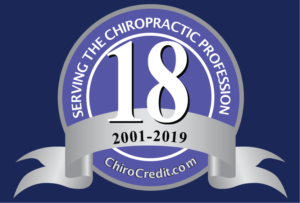011- Health Promotion, Wellness and Chiropractic Guidelines with Dr. Cheryl Hawk
 In this episode Cheryl Hawk, DC, PhD, CHES discusses chiropractic maintenance vs. wellness care, various chiropractic guidelines on low back pain, health promotion and pediatric care as well as her two new books. Dr. Cheryl Hawk is an author of over 100 publications in peer-reviewed scientific journals. She has designed and taught courses on wellness and health promotion to health professions students and in post-graduate education. She has also collaborated on the design and implementation of an online wellness certification program for health professionals, with Will Evans, DC, PhD, MCHES, and Michael Perko, PhD, CHES, FAAHE, offered by the National Wellness Institute. She received her Doctor of Chiropractic degree in 1976 from the National University of Health Sciences and practiced full-time for 12 years. In 1991, she earned a PhD in Preventive Medicine from the University of Iowa and also became a Certified Health Education Specialist (CHES). She is the author, with Will Evans, DC, PhD, MCHES, of Health Promotion and Wellness: An Evidence-Based Guide to Clinical Preventive Services. She is currently co-chair of the Research Working Group of the Academic Consortium for Complementary and Alternative Health Care. She has been named “Researcher of the Year” by both the American Chiropractic Association (2003) and the Foundation for Chiropractic Education and Research (2005). Her areas of interest are health promotion and prevention, practice-based research and health services research.
In this episode Cheryl Hawk, DC, PhD, CHES discusses chiropractic maintenance vs. wellness care, various chiropractic guidelines on low back pain, health promotion and pediatric care as well as her two new books. Dr. Cheryl Hawk is an author of over 100 publications in peer-reviewed scientific journals. She has designed and taught courses on wellness and health promotion to health professions students and in post-graduate education. She has also collaborated on the design and implementation of an online wellness certification program for health professionals, with Will Evans, DC, PhD, MCHES, and Michael Perko, PhD, CHES, FAAHE, offered by the National Wellness Institute. She received her Doctor of Chiropractic degree in 1976 from the National University of Health Sciences and practiced full-time for 12 years. In 1991, she earned a PhD in Preventive Medicine from the University of Iowa and also became a Certified Health Education Specialist (CHES). She is the author, with Will Evans, DC, PhD, MCHES, of Health Promotion and Wellness: An Evidence-Based Guide to Clinical Preventive Services. She is currently co-chair of the Research Working Group of the Academic Consortium for Complementary and Alternative Health Care. She has been named “Researcher of the Year” by both the American Chiropractic Association (2003) and the Foundation for Chiropractic Education and Research (2005). Her areas of interest are health promotion and prevention, practice-based research and health services research.
And…Dr. Hawk is also working on two upcoming books, Evidence-based Chiropractic Practice and Careers in Chiropractic. Although they won’t be published until 2017, there’s never been anything like it for chiropractic. This will be 2 entire volumes written NOT for chiropractors, but for potential patients, other providers, and potential chiropractic students!
As mentioned in the interview, please find a link to the link to the CCGPP/Clinical Compass website and materials at http://clinicalcompass.org/
After CCGPP teams with specific skills review and rate all information gathered from multiple databases (synthesis), this information is then translated into easily usable tools (the “Chiropractic Clinical Compass©”). The synthesis is not the Compass©, it is merely an evidence stratification for the most common conditions seen by chiropractic doctors. CCGPP recognizes that information in this format is difficult to digest and implement. To assist comprehension and ease of application, the synthesis will be translated for use in the treatment room via a DIER (Dissemination, Implementation, Evaluation, and Revision) process (see Powerpoint presentation on the Introduction page of this website for more details on this process). This process will ultimately produce the Chiropractic Clinical Compass©. In addition, in today’s ever-changing health care environment, the literature synthesis can be used for many purposes and CCGPP is flexible and responsive to rapidly changing trends and needs.
The goals of CCGPP/Clinical Compass are:
- To promote the improvement of the quality of chiropractic services and of the professional reputation of doctors of chiropractic
- To promote the intellectual, academic, and clinical integrity of chiropractic practice
- To promote the intellectual, academic, and clinical integrity of practice guidelines and PR
Please support CCGPP/Clinical Compass by donations at http://clinicalcompass.org/donate
For a list of Dr. Hawk’s scientific publications please click here.
Here is a list of the publications we discuss during this interview:
| 1. | The Role of Chiropractic Care in the Treatment of Dizziness or Balance Disorders: Analysis of National Health Interview Survey Data. |
| Ndetan H, Hawk C, Sekhon VK, Chiusano M. | |
| J Evid Based Complementary Altern Med. 2016 Apr;21(2):138-42. doi: 10.1177/2156587215604974. | |
| PMID: 26362851 [PubMed – indexed for MEDLINE] | |
| Similar articles |
| 2. | Consensus process to develop a best-practice document on the role of chiropractic care in health promotion, disease prevention, and wellness. |
| Hawk C, Schneider M, Evans MW Jr, Redwood D. | |
| J Manipulative Physiol Ther. 2012 Sep;35(7):556-67. doi: 10.1016/j.jmpt.2012.05.002. | |
| PMID: 22742964 [PubMed – indexed for MEDLINE] | |
| Similar articles |
| 3. | Chiropractic and public health: current state and future vision. |
| Johnson C, Baird R, Dougherty PE, Globe G, Green BN, Haneline M, Hawk C, Injeyan HS, Killinger L, Kopansky-Giles D, Lisi AJ, Mior SA, Smith M. | |
| J Manipulative Physiol Ther. 2008 Jul-Aug;31(6):397-410. doi: 10.1016/j.jmpt.2008.07.001. | |
| PMID: 18722194 [PubMed – indexed for MEDLINE] | |
| Similar articles |
| 4. | A framework for chiropractic training in clinical preventive services. |
| Hawk C, Evans MW Jr. | |
| Chiropr Man Therap. 2013 Aug 20;21(1):28. doi: 10.1186/2045-709X-21-28. | |
| PMID: 23962353 [PubMed] Free PMC Article | |
| Similar articles |
| 5. | Clinical Practice Guideline: Chiropractic Care for Low Back Pain. |
| Globe G, Farabaugh RJ, Hawk C, Morris CE, Baker G, Whalen WM, Walters S, Kaeser M, Dehen M, Augat T. | |
| J Manipulative Physiol Ther. 2016 Jan;39(1):1-22. doi: 10.1016/j.jmpt.2015.10.006. | |
| PMID: 26804581 [PubMed – indexed for MEDLINE] | |
| Similar articles |
| 6. | Best Practices for Chiropractic Care of Children: A Consensus Update. |
| Hawk C, Schneider MJ, Vallone S, Hewitt EG. | |
| J Manipulative Physiol Ther. 2016 Mar-Apr;39(3):158-68. doi: 10.1016/j.jmpt.2016.02.015. | |
| PMID: 27040034 [PubMed – in process] Free Article | |
| Similar articles |













Thank you so much for this material. As I’m reviewing one of the practice guidelines mentioned in this podcast, hearing it from the author really helps to get some greater nuances about the context in which they were written.